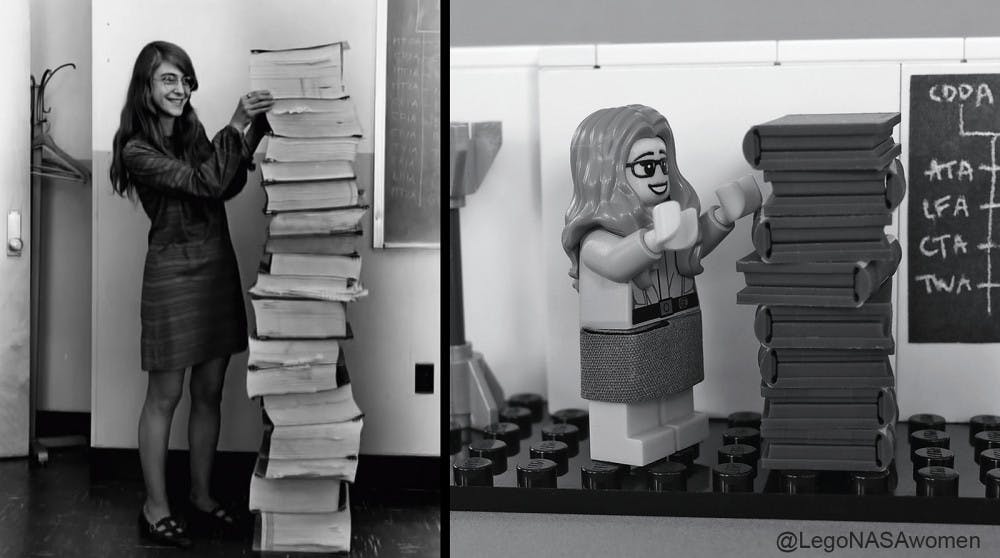Updated Nov. 1, 3:47 p.m.
Today, young girls who dream of becoming astronauts or space scientists will be able to literally hold their futures in the palms of their hands. Lego has released a new 231-piece set featuring figures based off of real women who worked for NASA, including Sally Ride, the first American female astronaut, and Mae Jemison, the first black woman in space.
“I really hope to normalize the idea that women have been in these fields for a long time and have contributed to NASA since its earliest days,” said Maia Weinstock ’99, the woman behind the whole idea. She added that she hopes that it will help boys understand that women, too, belong in STEM areas.
For girls, the figures can act as miniature role models in fields such as engineering, math or science, where they might feel inferior or unwelcome as females, she said.
“There’s that phrase — if you can see it, you can be it — and in a lot of toys and books and movies you don’t necessarily see many STEM role models for girls,” Weinstock added.
When young girls are out looking at a toy and they see that it doesn’t offer female protagonists, they may start to develop a sense that they don’t belong in those fields, Weinstock said. It’s important to start young and help girls understand that they can be leaders, she added.
A child’s surroundings have the power to inspire and motivate young minds, said Elizabeth Silber, physicist, planetary scientist and postdoctoral research fellow at the University.
“I remember watching Star Trek as a child and thinking, ‘How wonderful would it be to explore space?’ Here I am now, doing exactly that,” Silber said.
In choosing the women who would be turned into figures, Weinstock took several factors into account. Since she wasn’t allowed to use anyone currently working for NASA, she looked at past scientists and astronomers to choose five women who had different focuses at NASA and different cultural backgrounds. She included women who were well-known so that the set would draw attention and also lesser-known figures to teach people about their achievements.
“I think it’s really, really cool that this Lego set is based on real women, because it can encourage more girls to pursue STEM when they see females who have actually made important contributions,” Silber said.
While the set includes two astronomers, it also features scientists and engineers to show other possible career paths that women have and can pursue.
For Sandra Wiseman, senior research associate in earth, environmental and planetary sciences at Brown, it’s affirming and interesting to see science brought into toys. As someone who had worked on Mars-related research in her years as an undergraduate, she enjoyed seeing Lego come out with the Curiosity Rover.
“It’s really neat when something that’s happening in the scientific world can be immortalized as a toy,” Wiseman said. It’s even better when these toys help bring visibility to women in science, she added.
“Role models are important because they show that ambition, perseverance and determination will get you there,” Silber said. “Just because a societal perception might imply that you shouldn’t do it, it doesn’t mean you should turn around.”
Correction: A previous version of this article said that Elizabeth Silber was an astronomer and postdoctoral research fellow at the University. In fact, she is a physicist, planetary scientist and postdoctoral research fellow at the University. The Herald regrets the error.





